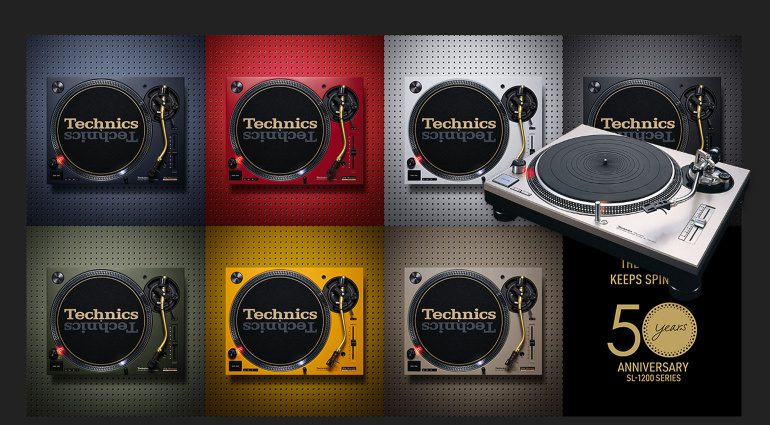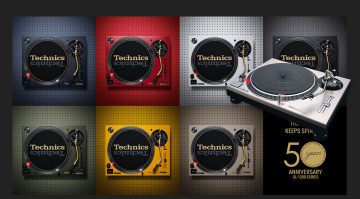Technics’ SL-1200 turntable is synonymous with DJing. This is the story of the classic platter, from humble beginnings to worldwide DJ domination.
Technics SL-1200
DJing may have changed a lot in the last 20 years thanks to the rise of digital audio but one thing remains the same: the importance of the Technics SL-1200 turntable. First released in 1972, the record player has been a favourite of DJs (and audiophiles) since its debut. I’m calling it a turntable singular but really it’s a series of them, with the SL-1200 moniker getting affixed to some 15 different models over the years. And that’s not even including the 1210 offshoots.
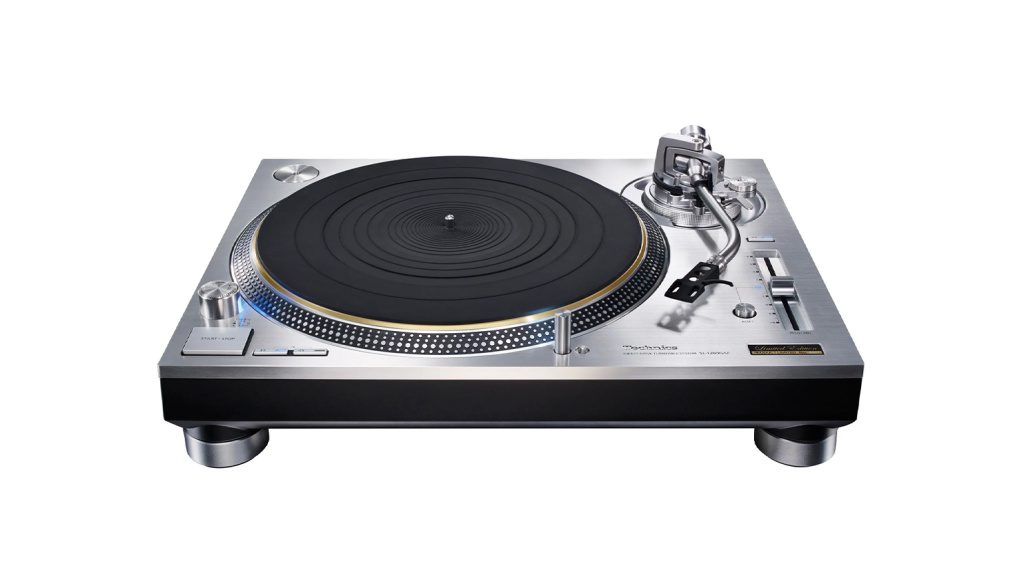
Why is the SL-1200 still so popular, and why do jocks love it so much? Let’s wade out into the deep end of the DJ pool and find out.
Before the Technics SL-1200: Rock the Discotheque
The original Technics SL-1200 made its debut in 1972. It arrived at a time when discotheques (soon to be known solely as ‘discos’) were gaining in popularity. Jocks needed professional-grade record players that could stand up to the rigours of club use with a strong motor with plenty of torque. With its solid construction and direct drive motor, the SL-1200 had all of this and more – but I’m getting ahead of the story.

We need to back up a little to 1970 and the Technics SP-10, the first direct-drive turntable. The engineers at Matsushita (the parent company behind the Technics brand and now known as Panasonic) wanted to create a new kind of motor for their record players, one that would reduce wow and flutter and other irregularities inherent in belt and idler drives, the popular motor types of the time. By connecting the motor directly to the platter (hence ‘direct drive’) they could achieve not only this but also quick starts and stops, essential elements to club DJing. After the release of the SL-1100 in 1971, which had a die-cast body with integrated tonearm and platter, the stage was set for the 1200.
Technics SL-1200: Burn Baby Burn
Technics released the original SL-1200 in 1972. DJs and club owners immediately cottoned to it, thanks to its direct-drive motor and vibration-absorbing cabinet, the latter of which is essential for preventing feedback in loud clubs. Although not initially intended as a speed control for DJing, clever jocks soon began using the pitch adjustment slider in the lower left corner to beat match, something just starting to happen in discos and at block parties.
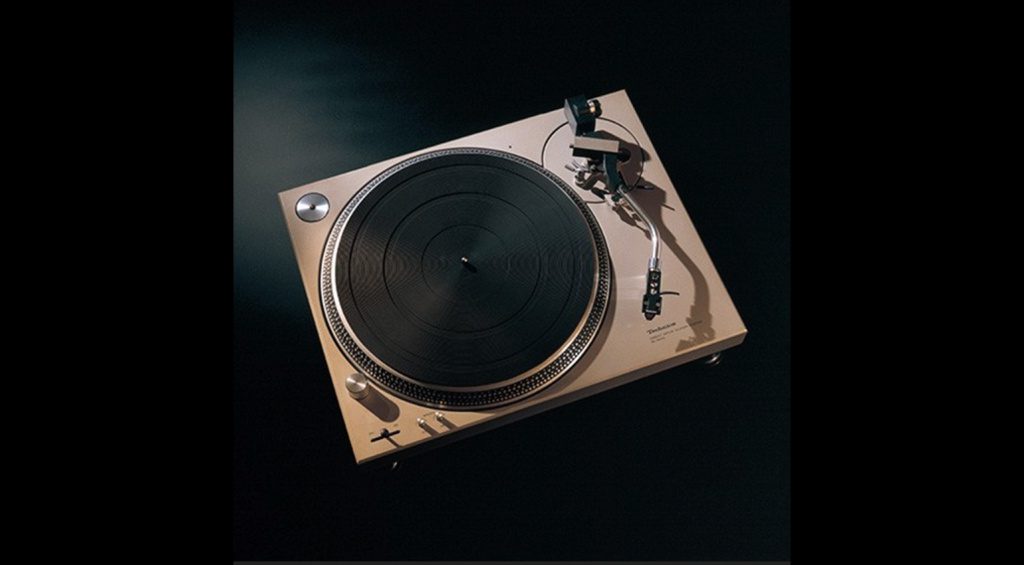
The company likely had the audiophile set in mind when designing the SL-1200 but, thanks to its many features, it soon became the DJ and club standard.
Technics SL-1200MK2: Birth of a Legend
Realizing that a large part of its customer base was DJs and clubs, Technics decided that it should specifically target this audience for the next iteration of the 1200. Engineers flew from Japan to Chicago, where they visited clubs and witnessed DJs using the pitch adjustment to beat match. They also spoke with DJs themselves.
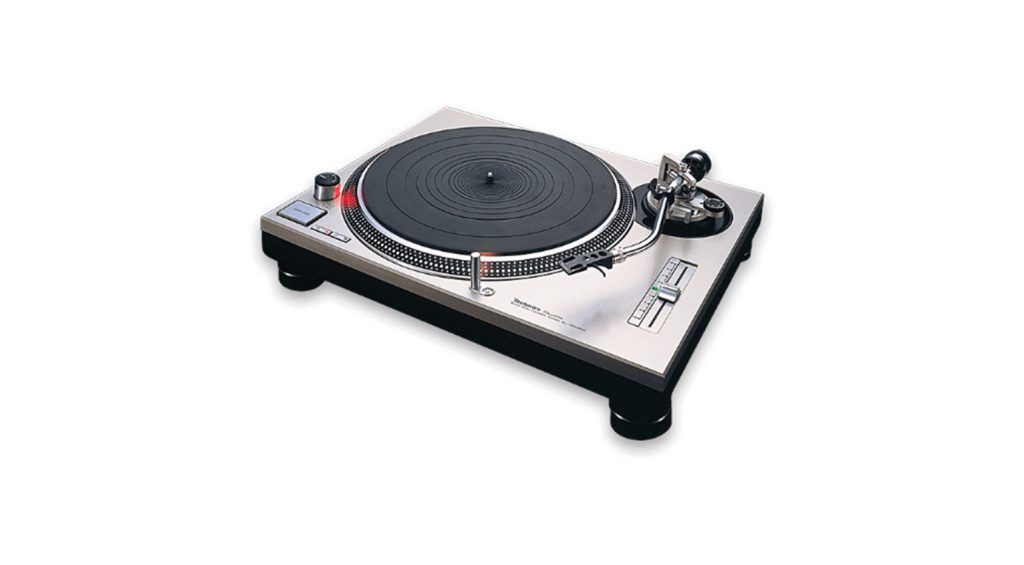
Then, in 1979, they gave the DJs what they wanted: the SL-1200MK2. Major changes included elongating the pitch adjustment (+/-8%) into a vertical slider and it to the right. The engineers also added the Quartz Lock system, which improved platter rotation accuracy. They also reworked the body of the turntable for better absorption and added special rubber feet.
The MK2 was a hit around the world, adopted by not only club DJs but also radio stations. Hip-hop DJs took to the MK2 as well, with Grandmaster Flash apparently rocking a set. Its heavy-duty construction and strong torque made it possible for DJs to develop scratching and other turntable techniques.
Along with the silver 1200, Technics sold the matte black 1210 model in Europe, which was the same as the 1200 but with a switchable power supply.
Technics SL-1200: Improvements Through the Years
The SL-1200 series remained in production from 1972-2010, and then again from 2016 to the present. Throughout this time Technics has continued to update the units with new technologies as well as release limited edition models (like the SL-1200M7B with Automobili Lamborghini). There are too many to list them all here but models that served to advance the technology include:
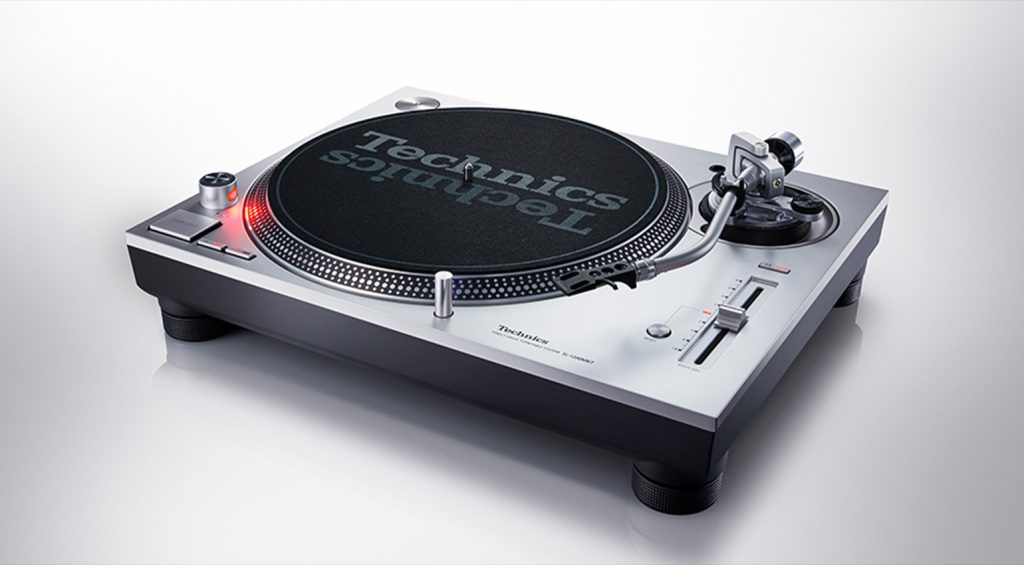
- SL-1200MK3 (1989): additional vibration proofing with T.N.R.C. (Technics Non Resonance Compound).
- SL-1200LTD (1995): limited to 5000 units with a pitch reset button.
- SL-1200MK3D (1997): removed the pitch adjustment centre click for better pitch adjustment at +/- zero.
- SL-1200MK5 (2000): adjustable turntable brake speed and white LED stylus light.
- SL-1200MK5G (2002): 30th-anniversary model with +/-16% speed adjustment and a blue LED light.
- SL-1200G (2016): Audiophile Grand Class model with 78 rpm speed.
- SL-1200 (2019): Coreless direct drive, digital pitch control, red and blue switchable LED and reverse function.
- SL-1200GR2 (2023): New ΔΣ-Drive (Delta Sigma Drive) motor.
A DJ’s Dream Comes True
I first wanted to become a DJ in 1984 when I was 12 years old. There was no way I could afford 1200s with my paper route money so I ended up with a mismatched set of belt drive turntables. That didn’t stop me from rocking all of the junior high birthday parties but it always felt like something was missing.
When I got my first proper job in my 20s, I took one of my first paychecks down to the local hi-fi store and handed it over for two SL-1200MK2 turntables, a pair or Ortofon Concorde needles and a Numark mixer. With two 1200s in front of me, I felt like I had finally become an adult. Within a few years, I was playing gigs around the United States, Canada and Japan – and everywhere I went, it was always 1200s in the club.
Technics SL-1200s in the Digital Era
Technics are less ubiquitous in this modern, digital age. Oh, they’re still popular with audiophiles. And for vinyl and scratch DJs, they remain the standard on which all other turntables are judged.
However, for new DJs just coming up, modern controllers and other pieces of gear remain the coveted devices. However, every piece of DJ kit, no matter how modern, still retains some of that SL-1200 DNA first developed way back in 1972.

